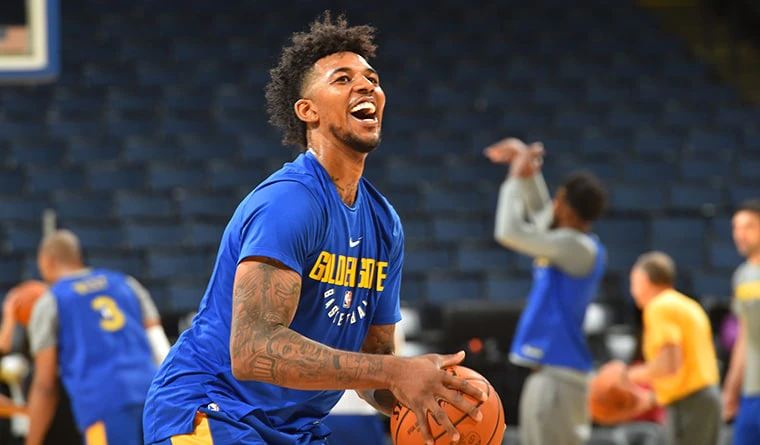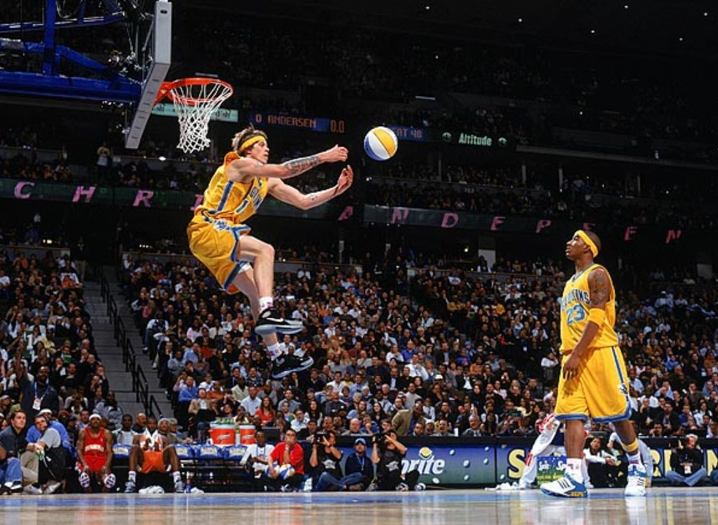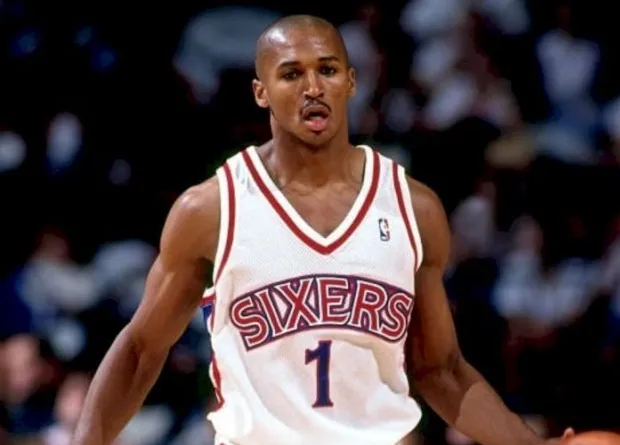Michael Jordan's first retirement, Ersan Ilyasova's true origins, the 1985 NBA Draft, and a slew of other fantastic conspiracy theories that are unlikely to die.
Ersan Ilyasova's true identity
So, let's begin with what is arguably the most unique myth in modern NBA history. Not only because it involves the possible exchange of identity (and nationality) of Ersan Ilyasova, a Turkish center currently under the Bucks' control, but also because no official evidence exists to refute the facts.
To understand what we're talking about, let's go back to August 7, 2002, when Arsen Ilyasov, an 18-year-old young man from Bukhara, Uzbekistan, crossed the Turkish border with his father on a 15-day permit. When his permit expired, Arsen Ilyasov, on the other hand, did not return to his homeland, and little is known about his whereabouts. Nobody filed a report about Ilyasov's disappearance; he seemed to vanish into thin air.
A month later, on September 19, 2002, a man named Semsettin Bulut went to the registry office in Eskişehir, the capital of the Turkish province of the same name, with his fifteen-year-old son, claiming that he had never declared his son's birth.
The declaration was accepted, and the boy, Ersan Ilyasova, was issued a Turkish passport as well as a certificate certifying his date of birth on May 15, 1987. Another strange coincidence is that the young Ersan will be signed by 'Ulkerspor shortly after, and will also play for the Turkish Under 20 national team regularly.
As soon as Ersan Ilyasova was noticed in international competitions, the Uzbek basketball federation had reason to believe that the 1987 prospect named Ersan Ilyasova was Arsen Ilyasov, a boy who had vanished from Uzbekistan sometime before.
As a result, the federation complained to FIBA, presenting a letter of protest in which it requested that an investigation be launched, entrusted either to the Uzbek federation or to third parties. Despite Uzbek pressure, FIBA decided to delegate the investigation to Turkey, which resulted in a two-week delay in the investigation's start.
Meanwhile, Uzbekistan pressed FIBA, claiming that Turkish colleagues were delaying the investigation to erase all traces of Arsen Ilyasov. This fear was not unfounded: no documents belonging to the player, who was born in 1984, were discovered when the investigation began. The story lasted several months until Ilyasova declared herself eligible for the 2005 NBA Draft, at which point FIBA sided with the Turkish basketball federation.
In the end, this incredible story could just have been a series of coincidences; in the absence of official documents, the mystery surrounding Ersan's youth remains unsolved, except his birth certificate.
The 1985 NBA draft rigged
Patrick Ewing was unanimously regarded as the first overall pick in the 1985 NBA Draft after finishing an outstanding career at Georgetown College. A complete center is one of those that could have made a positive difference in the future of any franchise. The New York Knicks were desperate for a center, and if the legend has it, the NBA was willing to go to any length to please the Knicks.
At the time, the NBA was still in its infancy in terms of economic and media prosperity: Larry Bird and Magic Johnson's exciting rivalry was just getting started, and future Hall of Famers like Michael Jordan, Hakeem Olajuwon, and Charles Barkley had only just finished their freshman year.
In a nutshell, the NBA required more exposure and funding. To get them, he could take advantage of the large market (made up of several million fans, significant television contracts, and sponsorships) mentioned by the New York team, which was regarded as the league's biggest at the time - and things don't appear to have changed. Even today, not much.
Another thing to keep in mind to fully comprehend this plot: the 1985 Draft order was the first to be determined by a lottery system. Until the previous year, the first absolute choice was determined by a coin toss between the Eastern and Western Conference teams with the worst records.
At this point, it's easy to see how proponents of this theory came to believe that David Stern rigged the lottery to give the Knicks, the team with the most revenue and visibility, the first pick in the Draft, with which to select Ewing. According to their calculations, rigging up a handful of sealed envelopes must have been easier than a simple coin toss.
These rumors have always been denied by David Stern and Dave DeBusschere. We believe that if Stern truly wanted to support the Knicks, he would have done so without resorting to national television.
The 2002 conference final between Kings and Lakers
Several games were won in the final seconds of the event, and the series itself lasted until Game 7. So there's another conspiracy theory: the referees favored the Lakers' victory in Game 6.
Tim Donaghy, a former referee, was the first to level this charge. Donaghy had been convicted by the NBA for illegal game betting a few years before, so he didn't seem like a trustworthy source; however, supporters of the theory saw him as an insider with inside information. Donaghy even went so far as to write the NBA a letter detailing what had occurred.
The main reasons for these accusations were that the referees had favored the Lakers with several questionable calls and that the Lakers had been sent to the line 27 times in the last quarter alone, compared to 9 times for the Kings. However, the former referee was not the only one to make the allegations; Bill Walton, sports reporters, and even a lawyer, Ralph Nader, were among those who did so.
Even Bill Plaschke, a reporter for the Los Angeles Times, said at the end of the game that the final quarter was "weird."
Tim Donaghy's allegations have never been confirmed by David Stern; however, given the highlights of the previous quarter, it is reasonable to ask a few questions about the actual arbitrage. Furthermore, simply considering how many professionals, not just fans, have leveled more or less serious charges against the former commissioner could be enough to frame him. Was it just bad luck for the Kings, or was it a full-fledged ruse?
Manute Bol’s Actual Age
Manute Bol is the subject of numerous legends, the most well-known of which include the legend of killing a lion with a spear, the legend of never having played a game sober while with the Sixers, and the legend of paying 80 cows to marry his wife in Sudan.
The Sudanese player died in 2010 at the age of 47, according to Wikipedia; however, he could have been much older. According to former Cleveland State coach Kevin Mackey, Bol was over 40 years old when he began playing in the NBA.
Manute never played for Cleveland State, instead of spending a year in Division II before beginning a ten-year NBA career. Bol could have been 50 years old in his final season, 1994-95, if he was truly 40 when he entered the league. We'll never know for sure, as coach Mackey claims: maybe it's just speculation; what is certain is that Manute Bol's story has once again established itself as something unique in the NBA world.
Paul “Poo” Pierce
Another odd NBA legend revolves around Paul Pierce and Game 1 of the 2008 NBA Finals between the Celtics and the Lakers. According to this theory, the wheelchair used to resuscitate the green-and-white number 34 was merely a ruse to conceal his sudden intestinal problems.
Images on television showed Paul Pierce leaping to contest a Kobe Bryant layup; when he re-entered contact with the parquet, he slumped to the ground, his knee touching. Concerned about a possible cruciate ligament injury, the medical staff wheeled Paul to the locker room in a wheelchair. Pierce, on the other hand, returned from the TD Garden tunnel a few minutes later, almost as if nothing had happened.
The fact that the number 34 returned from the locker room so quickly fueled this legend, even changing the match's inertia. When Paul Pierce prepares to shoot, a stain on his shorts is highlighted in a 30-second video uploaded to YouTube.
To dispel the myth, The Ringer's Jason Concepcion thought about it and dedicated an article to it, demonstrating that it is unfounded. Concepcion demonstrates that the player's position on the ground is not one of the most suitable for those who claim to have intestinal problems by analyzing the images: you would not lie down on your stomach, as Pierce does later, but you would curl up by wrapping your arms around your belly.
Furthermore, returning to the video's description with the stain on the shorts, we can see that it refers to Game 2. In those moments, Paul Pierce and the Celtics' medical staff almost certainly feared an injury, and the wheeled chair was used to try to limit any damage.
As a result, all of this explains how the theory was likely born from a memory error on the part of several NBA fans: those who saw the video of Game 2 probably associated this stain with an intestinal problem; he must have associated the two because he remembered a wheelchair in the show but not which game it was in.
Secret Suspension of Michael Jordan
This case isn't just a legend; it's a true conspiracy theory. According to this theory, Michael Jordan's first retirement would be preceded by an 18-month suspension from the NBA, which would be carried out in secret by then-commissioner David Stern.
The fact that Jordan had a habit of betting at the time, especially on golf games, a sport he frequently practiced in his spare time, raised the first suspicions. It's also worth remembering that his retirement, at the age of 30, surprised a lot of people. It almost perplexed them: such a gifted and competitive player could suddenly retire seemed unfathomable. A couple of sentences said at his farewell press conference to basketball only added to the suspicions.
Even worse, Jordan may have bet illegally on NBA games. Something that would astound the NBA community. So, to prevent his League from collapsing, David Stern would have suspended it once he became aware of His Airness' gambling problems. The former commissioner has consistently denied these rumors in the years since. Aside from the press conference statements, there is no strong evidence to support the theory. The truth is that such a plot is nothing more than a product of people's imaginations.
Jordan was going through a rough patch at the time, following his father's murder. Michael was extremely close to Jordan Senior, and the news of his death had to be devastating to him. In the face of such grief, each of us reacts differently: in the case of the former Bulls, the desire to play vanished, most likely out of nostalgia for his father. As a result, there was no hidden suspension: Jordan was simply unmotivated to continue playing basketball.
MJ would return to the NBA 18 months later, winning three more titles before retiring for the second time, putting the rumors to rest. Despite this, the conspiracy theory surrounding Michael Jordan's first withdrawal has survived to this day due to a lack of clear evidence.





